Professor Venki Ramakrishnan, a Nobel laureate for his work on unraveling the structure of function of the ribosome, has written a new book WHY WE DIE which is outstanding. Among many posts and recognitions for his extraordinary work in molecular biology, Venki has been President of the Royal Society, knighted in 2012, and was made a Member of the Order of Merit in 2022. He is a group leader at the MRC Laboratory of Molecular Biology research institute in Cambridge, UK.
A brief video snippet of our conversation below. Full videos of all Ground Truths podcasts can be seen on YouTube here. The audios are available on Apple and Spotify.
Transcript with links to audio and external links
Eric Topol (00:06):
Hello, this is Eric Topol with Ground Truths, and I have a really special guest today, Professor Venki Ramakrishnan from Cambridge who heads up the MRC Laboratory of Molecular Biology, and I think as you know a Nobel laureate for his seminal work on ribosomes. So thank you, welcome.
Venki Ramakrishnan (00:29):
Thank you. I just want to say that I'm not the head of the lab. I'm simply a staff member here.
Eric Topol (00:38):
Right. No, I don't want to give you more authority than you have, so that was certainly not implied. But today we're here to talk about this amazing book, Why We Die, which is a very provocative title and it mainly gets into the biology of aging, which Venki is especially well suited to be giving us a guided tour and his interpretations and views. And I read this book with fascination, Venki. I have three pages of typed notes from your book.
The Compression of Morbidity
Eric Topol (01:13):
And we could talk obviously for hours, but this is fascinating delving into this hot area, as you know, very hot area of aging. So I thought I'd start off more towards the end of the book where you kind of get philosophical into the ethics. And there this famous concept by James Fries of compression of morbidity that's been circulating for well over two decades. That's really the big question about all this aging effort. So maybe you could give us, do you think there is evidence for compression of morbidity so that you can just extend healthy aging and then you just fall off the cliff?
Venki Ramakrishnan (02:00):
I think that's the goal of most of the sort of what I call the saner end of the aging research community is to improve our health span. That is the number of years we have healthy lives, not so much to extend lifespan, which is how long we live. And the idea is that you take those years that we now spend in poor health or decrepitude and compress them down to just very short time, so you're healthy almost your entire life, and then suddenly go into a rapid decline and die. Now Fries who actually coined that term compression or morbidity compares this to the One-Hoss Shay after poem by Oliver Wendell Holmes from the 19th century, which is about this horse carriage that was designed so perfectly that all its parts wore out equally. And so, a farmer was riding along in this carriage one minute, and the next minute he found himself on the ground surrounded by a heap of dust, which was the entire carriage that had disintegrated.
Venki Ramakrishnan (03:09):
So the question I would ask is, if you are healthy and everything about you is healthy, why would you suddenly go into decline? And it's a fair question. And every advance we've made that has kept us healthier in one respect or another. For example, tackling diabetes or tackling heart disease has also extended our lifespan. So people are not living a bigger fraction of their lives healthily now, even though we're living longer. So the result is we're spending the same or even more number of years with one or more health problems in our old age. And you can see that in the explosion of nursing homes and care homes in almost all western countries. And as you know, they were big factors in Covid deaths. So I'm not sure it can be accomplished. I think that if we push forward with health, we're also going to extend our lifespan.
Venki Ramakrishnan (04:17):
Now the argument against that comes from studies of these, so-called super centenarians and semi super centenarians. These are people who live to be over 105 or 110. And Tom Perls who runs the New England study of centenarians has published findings which show that these supercentenarians live extraordinarily healthy lives for most of their life and undergo rapid decline and then die. So that's almost exactly what we would want. So they have somehow accomplished compression of morbidity. Now, I would say there are two problems with that. One is, I don't know about the data sample size. The number of people who live over 110 is very, very small. The other is they may be benefiting from their own unique genetics. So they may have a particular combination of genetics against a broad genetic background that's unique to each person. So I'm not sure it's a generally translatable thing, and it also may have to do with their particular life history and lifestyle. So I don't know how much of what we learned from these centenarians is going to be applicable to the population as a whole. And otherwise, I don't even know how this would be accomplished. Although some people feel there's a natural limit to our biology, which restricts our lifespan to about 115 or 120 years. Nobody has lived more than 122. And so, as we improve our health, we may come up against that natural limit. And so, you might get a compression of morbidity. I'm skeptical. I think it's an unsolved problem.
Eric Topol (06:14):
I think I'm with you about this, but there's a lot of conflation of the two concepts. One is to suppress age related diseases, and the other is to actually somehow modulate control the biologic aging process. And we lump it all together as you're getting at, which is one of the things I loved about your book is you really give a balanced view. You present the contrarians and the different perspectives, the perspective about people having age limits potentially much greater than 120, even though as you say, we haven't seen anyone live past 122 since 1997, so it's quite a long time. So this, I think, conflation of what we do today as far as things that will reduce heart disease or diabetes, that’s age related diseases, that's very different than controlling the biologic aging process. Now getting into that, one of the things that's particularly alluring right now, my friend here in San Diego, Juan Carlos Belmonte, who went over from Salk, which surprised me to the Altos Labs, as you pointed on in the book.
Venki Ramakrishnan (07:38):
I'm not surprised. I mean, you have a huge salary and all the resources you want to carry out the same kind of research. I wouldn't blame any of these guys.
Rejuvenating Animals With Yamanaka Factors
Eric Topol (07:50):
No, I understand. I understand. It's kind of like the LIV Golf tournament versus the PGA. It's pretty wild. At any rate, he's a good friend of mine, and I visited with him recently, and as you mentioned, he has over a hundred people working on this partial epigenetic reprogramming. And just so reviewing this for the uninitiated is giving the four Yamanaka transcription factors here to the whole animal or the mouse and rejuvenating old mice, essentially at least those with progeria. And then others have, as you point out in the book, done this with just old mice. So one of the things that strikes me about this, and in talking with him recently is it's going to be pretty hard to give these Yamanaka factors to a person, an intravenous infusion. So what are your thoughts about this rejuvenation of a whole person? What do you think?
Venki Ramakrishnan (08:52):
If I hadn't seen some of these papers would've been even more skeptical. But the data from, well, Belmonte's work was done initially on progeria mice. These are mice that age prematurely. And then people thought, well, they may not represent natural aging, and what you're doing is simply helping with some abnormal form of aging. But he and other groups have now done it with normal mice and observed similar effects. Now, I would say reprogramming is one way. It's a very exciting and powerful way to almost try to reverse aging because you're trying to take cells back developmentally. You're taking possibly fully differentiated cells back to stem cells and then helping regenerate tissue, which one of the problems as we age is we start losing stem cells. So we have stem cell depletion, so we can no longer replace our tissues as we do when we're younger. And I think anyone who knows who's had a scrape or been hurt in a fall or something knows this because if I fall and scrape my elbow and get a big bruise and my grandson falls, we repair our tissues at very, very different rates. It takes me days or weeks to recover, and my grandson's fine in two or three days. You can hardly see he had a scrape at all. So I think that's the thing that these guys want to do.
Venki Ramakrishnan (10:48):
And the problem is Yamanaka factors are cancer. Two of them are oncogenic factors, right? If you give Yamanaka factors to cells, you can take them all the way back to what are called pluripotent cells, which are the cells that are capable of forming any tissue in the body. So for example, a fertilized egg or an early embryo cells from the early embryo are pluripotent. They could form anything in the body. Now, if you do that to cells with Yamanaka factors, they often form teratomas, which are these unusual forms of cancer tumors. And so, I think there's a real risk. And so, what these guys say is, well, we'll give these factors transiently, so we'll only take the cells back a little ways and not all the way back to pluripotency. And that way if you start with skin cells, you'll get the progenitor stem cells for skin cells. And the problem with that is when you do it with a population, you're getting a distribution. Some of them will go back just a little, some of them may go back much more. And I don't know how to control all this. So I think it's very exciting research. And of course, if I were one of these guys, I would certainly want to carry on doing that research. But I don't think it's anywhere near ready for primetime in terms of giving it to human beings as a sort of anti-aging therapeutic.
Aging and Cancer Shared Hallmarks
Eric Topol (12:31):
Yeah. Well, I couldn't agree more on that because this is a company that's raised billions of dollars to go into clinical trials. And the question that comes up here, which is a theme in the book and a theme with the aging process to try to artificially, if you will affect it, is this risk of cancer. And as we know, the hallmarks of aging overlap considerably with the hallmarks of cancer. And this is just one example, as you mentioned, where these transcription factors could result in generating cancer. But as you also point out in the book at many places, methylation changes, DNA, repair, and telomeres.
Venki Ramakrishnan (13:21):
And telomeres.
Venki Ramakrishnan (13:24):
All of those are related to cancer as well. And this was first pointed out to me by Titia de Lange, who's a world expert on telomeres at Rockefeller, and she was pointing out to me the intimate connection between cancer and aging and many mechanisms that have evolved to prevent cancer early in life tend to cause aging later in life, including a lot of DNA damage response, which sends cells into senescence and therefore causes aging. Buildup of senescence cells is a problem later in life with aging, but it has a role which is to prevent cancer early in life. And so, I think it's going to be the same problem with stem cell therapy. I think very targeted stem cell therapy, which is involved in replacing certain tissues, the kind of regenerative medicine that stem cells have been trying to address for a very long time, and only now we're beginning to see some of the successes of that. So it's been very slow, even when the goal and target is very specific and well-defined, and there you are using that stem cell to treat a pretty bad disease or some really serious problem. I think with aging, the idea that somebody might take this so they can live an extra 10 years, it's a much higher bar in terms of safety and long-term safety and efficacy. So I don't think that this is going to happen anytime soon, but it’s not to say it'll never happen. There is some serious biology underlying it.
Eric Topol (15:13):
Right. Well, you just touched on this, but of course the other, there's several big areas that are being explored, and one of them is trying to deal with these senescent cells and trying to get rid of them from the body because they can secrete evil humors, if you will. And the problem with that, it seems that these senescent cells are sort of protective. They stop dividing, they're not going to become cancerous, although perhaps they could contribute to that in some way. So like you say, with telomeres and so many things that are trying to be manipulated here, there's this downside risk and it seems like this is what we're going to have to confront this. We have seen Venki with the CAR-T, the T-cell engineering, there's this small risk of engendering cancer while you're trying to deal with the immune system.
Senolytics
Venki Ramakrishnan (16:07):
Yeah, I think with senescent cells, the early in life senescent cells have an important role in biology. They're essentially signaling to the immune system that there's a site that's subject to viral infection or wounds or things like that. So it's a signal to send other kinds of cells there to come and repair the damage. Now, of course, that evolved to help us early in life. And also many senescent cells were a response to DNA damage. And that's again, a way for the body that if your DNA is damaged, you don't want that cell to be able to divide indefinitely because it could become cancerous. And so, you send it into senescence and get it out of harm's way. So early life, we were able to get rid of these senescent cells, we were able to come to the site and then clean up the damage and eventually destroy the senescent cells themselves.
Venki Ramakrishnan (17:08):
But as we get older, the response mechanisms also deteriorate with age. Our immune system deteriorates with age, all the natural signaling mechanisms deteriorate with age. And so, we get this buildup of senescent cells. And there people have asked, well, these senescent cells don't just sit there, they secrete inflammatory compounds, which originally was a feature, not a bug, but then it becomes a problem later in life. And so, people have found that if you target senescent cells in older animals, those animals improve their symptoms of aging improved dramatically or significantly anyway. And so, this has led to this whole field called senolytics, which is being able to specifically target senescent cells. Now there the problem is how would you design compounds that are highly specific for senescent cells and don't damage your other cells and don't have other long-term side effects? So again, I think it's a promising area, but a lot of work needs to be done to establish long-term safety and efficacy.
Eric Topol (18:23):
Right. No, in fact, just today in Nature, there's a feature on killing the zombie cells, and it discusses just what you're pointing out, which is it's not so easy to tag these specifically and target them, even though as you know, there's some early trials and things like diabetic macular edema. And we'll see how that plays out. Now, one of the things that comes up is the young blood story. So in the young blood, whether it's this parabiosis or however you want to get at it, and I guess it even applies to the young microbiome of a gut, but there's this consistent report that there's something special going on there. And of course the reciprocal relationship of giving the old blood to the young mice, whatever, but no one can find the factor, whether it's platelet factor 4, GDF11, or what are your thoughts about this young blood story?
Venki Ramakrishnan (19:25):
I think there's no question that the experiments work because they were reproduced and they were reproduced over quite a long period, and which is that when you connect an old mouse or rat with a young equivalent, then the old mouse or old rat benefits from the young blood from the younger animal. And conversely, the younger animal suffers from the blood from the older animal. And then people were wondering whether this is simply that the young animal has better detoxification and things like that, or whether it's actually the blood. And they gave it just as transfusion without connecting the animals and showed that it really was the blood. And so, this of course then leads to the question, well, what is it about young blood that’s beneficial and what is it about old blood that is bad? But the problem is blood has hundreds of factors. And so, they have to look at which factors are significantly different, and they might be in such small quantities that you might not be able to detect those differences very easily.
Venki Ramakrishnan (20:40):
And then once you've detected differences, then you have to establish their mechanism of action. And first of all, you have to establish that the factor really is beneficial. Then you have to figure out how it works and what its potential side effects could be. And so again, this is a promising area where there's a lot of research, but it has not prevented people from jumping the gun. So in the United States, and I should say a lot of them in your state, California somehow seems to attract all these immortality types. Well, anyway, a lot of companies set up to take blood from young donors, extract the plasma and then give it to rich old recipients for a fee for a healthy fee. And I think the FDA actually shut down one of them on the grounds that they were not following approved procedure. And then they tried to start up under a different name. And then eventually, I don't know what happened, but at one point the CEO said something I thought was very amusing. He said, well, the problem with clinical trials is that they take too long. I'm afraid that's characteristic of some portion of this sort of anti-aging therapeutics community. There's a very mainstream rigorous side to it, but there's also at the other end of the spectrum, kind of the wild west where people just sell whatever they can. And I think this exploits people's fear of getting old and being disabled or things like that and then dying. And I think the fear seems to be stronger in California where people like their lives and don't want to age.
Eric Topol (22:49):
You may be right about that. I like your term in the book immortality merchants, and of course we'll get into a bit, I hope the chapter on the crackpots and prophets that you called it was great. But that quote, by the way, which was precious from, I think it was Ambrosia, the name of the company and the CEO, but there's another quote in the book I want to ask you about. Most scientists working on aging agree that dietary restriction can extend both healthy life and overall life in mice and also lead to reductions in cancer, diabetes, and overall mortality in humans. Is that true? Most scientists think that you can really change these age-related diseases.
Caloric Restriction and Related Pathways
Venki Ramakrishnan (23:38):
I think if you had to pick one area in which there's broad agreement, it is caloric restriction. But I wouldn't say the consensus is complete. And the reason I say that is that most of the comparisons are between animals that can eat as much as they want, called ad libitum diet and mice that are calorically restricted or same with other animals even yeast. You either compared with an extremely rich medium or in a calorically restricted medium. And this is not a great comparison. And people, there's one discrepancy, and that was in monkeys where an NIH study didn't find huge differences, whereas a Wisconsin study found rather dramatic differences between the control group and the calorically restricted group. And so, what was the difference? Well, the difference was that the NIH study, the controlled group didn't have a calorically restricted diet, but still had a pretty reasonable diet.
Venki Ramakrishnan (24:50):
It wasn't given a unhealthy rich diet of all you can eat. And then they tried to somehow reconcile their findings in a later study. But it leads to the question of whether what you can conclude is that a rich all you can eat diet, in other words, gorging on an all you can eat buffet is definitely bad for you. So that's why you could draw that conclusion rather than saying it's actually the caloric restriction. So I think people need to do a little more careful study. There was also a study on mice which took different strains of mice and showed that in some strains, caloric restriction actually shortened lifespan didn't increase lifespan. Now, much of the aging community says, ah, that's just one study. But nobody's actually shown whether there was anything wrong with that study or even tried to reproduce it. So I think that study still stands.
Venki Ramakrishnan (25:51):
So I think it's not completely clear, but the fact is that there's some calorie dependence that's widely been observed across species. So between the control group and the experimental group, whatever you may, however, you may define it as there's been some effective calories intake. And the other interesting thing is that one of the pathways affected by caloric restriction is the so-called TOR pathway and one of the inhibitors of the TOR pathways is rapamycin. And rapamycin in studies has also shown some of these beneficial effects against the symptoms of aging and in lifespan. Although rapamycin has the same issue as with many other remedies, it's an immunosuppressive drug and that means it makes you more prone to infection and wound healing and many other things. I believe one of them was there's a question of whether it affects your libido, but nevertheless, that has not prevented rapamycin clinics from opening up, did I say in California? So I do think that there's often serious science, which leads to sort of promising avenues. But then there are of course people who jump the gun and want to go ahead anyway because they figure by the time trials are done, they'll be dead and they'd rather try act now.
Eric Topol (27:36):
Right. And you make a good, I mean the rapamycin and mTOR pathway, you really developed that quite a bit in the book. It's really quite complex. I mean, this is a pleotropic intervention, whether it's a rapalogs or rapamycin, it's just not so simple at all.
Venki Ramakrishnan (27:53):
Right. It's not at all simple because the TOR pathway has so many consequences. It affects so many different processes in the cell from including my own field of protein synthesis. It's one of the things it does is shut down global protein synthesis, and that's one of the effects of inhibiting TOR. So, and it turns up autophagy, which is this recycling of defective proteins and entirely defective entire organelles. So I think the TOR pathway is like a hub in a very large network. And so, when you start playing with that, you're going to have multiple consequences.
Eric Topol (28:37):
Yeah, no. And another thing that you develop so well is about this garbage disposal waste disposal system, which is remarkably elaborate in the cell, whether it's the proteasome for the proteins and the autophagosome for the autophagy with the lysosomes and the mitochondria mitophagy. Do you want to comment about that? Because this is something I think a lot of people don't appreciate, that waste management in the cell is just, it's a big deal.
Venki Ramakrishnan (29:10):
So we always think of producing things in the cell as being important, making proteins and so on. But the fact is destroying proteins is equally important because sometimes you need proteins for a short time, then they've done their job and you need to get rid of them, or proteins become dysfunctional, they stop working, or even worse, they start clumping together and causing diseases for example you could think of Alzheimer's as a disease, which involves protein tangles. Of course, the relationship between the tangles and the disease is still being worked out, but it's a characteristic of Alzheimer's that you have these protein tangles and the cell has evolved very elaborate mechanisms to constantly turn over defective proteins. Well, for example, it senses when proteins are unfolded and essentially the chain has unraveled and is now sticking to all sorts of things and causing problems. So I think in all of these cases, the cells evolved very elaborate mechanisms to recycle defective products, to have proper turnover of proteins. And in fact, recycling of entire organelles like mitochondria, when they become defective, the whole mitochondria can be recycled. So these systems also break down with aging. And so, as we age, we have more of a tendency to accumulate unfolded proteins or to accumulate defective mitochondria. And it's one of the more serious problems with aging.
Eric Topol (30:59):
Yeah, there's quite a few of them. Unfortunately, quite a few problems. Each of them are being addressed. So there's many different shots on goal here. And as you also aptly point out, they're interconnected. So many of these things are not just standalone strategies. I do want to get your sense about another popular thing, especially here out in California, are the clocks, epigenetic clocks in particular. And these people are paying a few hundred dollars and getting their biologic age, which what is that? And they're also thinking that I can change my future by getting clocks. Some of these companies offer every few months to get a new clock. This is actually remarkable, and I wonder what your thoughts are about it.
Venki Ramakrishnan (31:48):
Well, again, this is an example of some serious biology and then people jumping the gun to use it. So the serious biology comes from the fact that we age at different rates individuals. So anyone who's been to a high school reunion knows this. You'll have classmates who are unrecognizable because they’ve aged so much and others who've hardly changed since you knew them in high school. So of course at my age, that's getting rarer and rarer. But anyway, but you know what I mean. So the thing is that, is there a way that we can ask on an individual level how much has that individual aged? And there are markers that people have identified, some of them are markers on our DNA, which you mentioned in California. Horvath is a very famous scientist who has a clock named after him actually, which has to do with methylation of our DNA and the patterns of methylation affect the pattern of gene expression.
Venki Ramakrishnan (33:01):
And that pattern changes as we age. And they've shown that those patterns are a better predictor of many of the factors of aging. For example, mortality or symptoms of aging. They're a better predictor of that than chronological age. And then of course there are blood markers, for example, levels of various blood enzymes or blood factors, and there are dozens of these factors. So there are many different tests of many different kinds of markers which look at aging. Now the problem is these all work on a population level and they also work on an individual level for time comparison. That is to say, if you want to ask is some intervention working? You could ask, how fast are these markers changing in this person without the intervention and how fast are they changing with the intervention? So for these kind of carefully controlled experiments, they work, but another case is, for example, glycosylation of proteins, especially proteins of your immune system.
Venki Ramakrishnan (34:15):
It turns out that adding sugar groups to your immune system changes with age and causes an immune system to misfire. And that's a symptom of aging. It's called inflammaging. So people have used different markers. Now the problem is these markers are not always consistent with each other because you may be perfectly fine in many respects, but by some particular marker you may be considered old just because they're comparing you to a population average. But how would you say one person said, look, we all lose height as we age, but that doesn't mean if you take a short person, you can consider them old. So it's a difference between an individual versus a population, and it's a difference between what happens to an individual by following that individual over time versus just taking an individual and comparing it to some population average. So that's one problem.
Organ Clocks
Venki Ramakrishnan (35:28):
The other problem is that our aging is not homogeneous. So there's a recent paper from I believe Tony Wyss-Coray group, which talks about the age of different organs in the same person. And it turns out that our organs, and this is not just one paper, there are other papers as well. Our organs don't necessarily age at the same rate. So giving a single person, giving a person a single number saying, this is your biological age, it's not clear what that means. And I would say, alright, even if you do it, what are you going to do about it? What can you do about it knowing your biological, the so-called number of a biological age. So I’m not a big fan. I’m a big fan of using these markers as a tool in research to understand what interventions work because otherwise it would take too long. You’d have to wait 20 years to see some large scale symptoms. And certainly, if you want to look at mortality, you’d have to wait possibly even longer. But if you were to be able to follow track these interventions and see that these markers slowed down with intervention, then you could say, well, your interventions having an effect on something related to aging. So I would say these are very useful research tools, but they’re not meant to be used at $500 a pop in your age.
Venki Ramakrishnan (37:02):
But of course that hasn't stopped lots of companies from doing it.
Eric Topol (37:07):
No, it's just amazing actually. And by the way, we interviewed Tony Wyss-Coray about the organ clock, the paper. I thought it really was quite a great contribution, again, on a research level.
Venki Ramakrishnan (37:19):
He's a very serious scientist. He actually spoke here at the LMB as well. He gave a very nice talk here.
Is Aging A Disease?
Eric Topol (37:26):
He's the real deal. And I think that's going to help us to have that organ specific type of tracking is another edge here to understand the effects. Well, before we wrap up, I want to ask you a question that you asked in the book. Is aging a disease?
Venki Ramakrishnan (37:49):
That's again, a controversial subject. So the WHO, and I believe the FDA decided that aging was not a disease on the grounds that it's inevitable and ubiquitous. It happens to everybody and it's inevitable. So how could something that happens to everybody and inevitable be considered a disease? A disease is an abnormal situation. This is a normal situation, but the anti-aging researchers and especially the anti-aging therapeutics people don't like that because if it's not a disease, how can they run a clinical trial? So they want aging to be considered a disease. And their argument is that if you look at almost every condition of old age, every disease of old age like cancer, diabetes, heart disease, dementia, the biggest risk factor in all of these diseases is age. That's the strongest risk factor. And so, they say, well, actually, you could think of these diseases as secondary diseases, the primary disease being age, and then that results in these other diseases.
Venki Ramakrishnan (39:07):
I am a little skeptical of that idea. I tend to agree with the WHO and the FDA, but I can see both sides of the argument. And as you know, I've laid them both out. My view is that it should be possible to do trials that help with aging regardless of whether you consider aging a disease or not. But that will require the community to agree on what set of markers to use to characterize success. And that's people, for example, Tony Wyss-Coray has his proteome, blood proteome markers, Horvath has his DNA methylation clock. There are a whole bunch of these. And then there are people with glycation or glycosylation of various proteins as markers. These people need to all come together. Maybe we need to organize a nice conference for them in some place like Southern California or Hawaii or somewhere, put them together in a locked room for a week so that they can thrash out a common set of markers and at least agree on what experiments they need to do to even come to that agreement and then use that to evaluate anti-aging therapies. I think that would be a way forward.
Eric Topol (40:35):
Yeah, I think you're bringing up a really valuable point because at the moment, they're kind of competing with one another, whether it's the glycosylated proteins or the transcriptomics or the epigenetics. And we don't know whether these are additive or what they're really measuring.
Venki Ramakrishnan (40:53):
Some of them may be highly correlated, and that's okay, but I think they need to know that. And they also need to come up with some criteria of how do we define age in an individual. It's not one number, just like we have many things that characterize our health. Cholesterol is one, blood pressures another, various other lipids. They're all blood enzymes, liver enzymes. All these things are factors in defining our so-called biological health. So I don't think there's some single number that's going to say this is your age. Just like there isn't one single thing that says you're healthy, you're not healthy.
DNA Repair
Eric Topol (41:38):
Right, that’s well put. Last topic on aging is on about DNA repair, which is an area that you know very well. And one of the quotes in your book, I think is important for people to take in. “Nevertheless, they will make an error once every million or so letters in a genome with a few billion letters. That means several thousand mistakes occur each time a cell divides. So the DNA repair enzyme, as you point out the sentinels of our genome, the better we repair, the better we age.” Can we fix the DNA repair problem?
Venki Ramakrishnan (42:20):
I think maybe, again, I'm not sure what the consequences would be and how much it would take. There's one curious fact, and that is that there was a paradox called Peto’s paradox after the scientist who discovered it, which is why don't big animals get cancer much more frequently than say a mouse? In fact, a mouse gets cancer far more readily than an elephant does, and in reality, the elephant should actually get cancer more because it has many orders of magnitude more cells, and all it takes is for one cell to become cancerous for the animal to get cancer and die. So the chances that one cell would become cancer would be larger if there are many, many more cells. And it turns out that elephants have many copies of DNA repair proteins or DNA damage response proteins, not so much DNA repair, but the response to DNA damage and in particular, a protein called p53. And so, this leads to the question that if you had very good DNA repair or very good DNA damage response, would you then live longer or solve this problem? I'm not entirely sure because it may have other consequences because for example, you don't want to send cells into senescence too easily. So I think these things are all carefully balanced, evolutionarily, depending on what's optimized to optimize fitness for each species.
Venki Ramakrishnan (44:13):
For a mouse, the equation's different than for a large animal because a mouse can get eaten by predators and so on. So there, it doesn't pay for evolution to spend too much select for too much spending of resources in maintenance and repair, for larger animals the equation is different. So I just don't know enough about what the consequences would be.
Eric Topol (44:40):
No, it's really interesting to speculate because as you point out in the book, the elephant has 20 copies of p53, and we have two as humans. And the question is that protection from cancer is very intriguing, especially with the concerns that we've been talking about.
Venki Ramakrishnan (44:57):
And it was also true, I believe they did some analysis of genomics of these whales that live very long, and they found sorts of genes that are probably involved in DNA repair or DNA damage response.
Eric Topol (45:14):
Well, this is a masterful book. Congratulations, Venki. I thoroughly enjoyed it. It's very stimulating. I know a lot of the people that will listen or read the transcript will be grabbed by it.
Crackpots and Prophets
Venki Ramakrishnan (45:28):
I think what I've tried to do is give the general reader a real understanding of the biology of aging so that even a complete non-scientist can get an understanding of the processes, which in turn empowers them to take action to do the sort of things that will actually really help. And also it'll guard them against excessive hype, of which there's a lot in this business. And so, I think that was the goal, and to try and present a balanced view of the field. I'm merely trying to be a realist. I'm not being a pessimist about it, but I also think this excessively optimistic hype is actually bad for the field and bad for science and bad for the public as well.
Eric Topol (46:16):
Well, and you actually were very kind in the chapter you have on crackpots and prophets. You could have been even tougher on some of these guys. You were very relatively diplomatic and gentle, I thought, I don't know if you were holding back.
Venki Ramakrishnan (46:28):
I had two lawyers looked at it, so.
Eric Topol (46:33):
I believe it. And now one thing, apart from what we've been talking about because of your extraordinary contribution on the structural delineation of the ribosome back in the early 2000s and 2009 Nobel Prize. Now, the world of AI now with AlphaFold 3 and all these other large language models, would that have changed your efforts? Would that have accelerated things or is it not really?
Venki Ramakrishnan (47:09):
Well, it would've helped, but you would still need the experimental data to solve something like the ribosome, a large complex like the ribosome. And the other thing that would really change well has changed our world is the advent of cryo-electron microscopy of which Scripps is one of the leading places for it. And that has really changed it so that now nobody would bother to crystallize a ribosome and try to get an X-ray structure out of it. You would just throw it into an EM grid, collect your data and be off to the races. So new ribosome structures are being solved all the time at a fraction, a tiny fraction of the time it took to solve the first one.
Eric Topol (48:02):
Wow, that's fascinating. This has been a real joy for Venki to discuss your book and your work, and thanks so much for what you're doing to enlighten us and keep the balance. And it may not be as popular as the immortality merchants, but it's really important stuff.
Venki Ramakrishnan (48:19):
Yeah, no, I hope actually, I found that many of the public want to read about the biology of aging. They're curious. Humans have been curious ever since we knew about mortality, about why some species live so short lives and other species live such a long time and why we actually have to age and die. So there’s natural curiosity and then it also empowers the public once they understand the basis of aging, to take action, to live healthy lives and do that. It's an empowering book rather than a recipe book.
Venki Ramakrishnan (49:01):
I think a lot of the public actually does appreciate that. And of course, scientists will like the sort of more balanced and tone.
Eric Topol (49:13):
Well, you do it so well. All throughout you have metaphors to help people really understand and the concepts, and I really applaud you for doing this. In fact, a couple of people who we both know, Max and John Brockman, apparently were influential for you to get to do it. So I think it's great that you took it on and all the power to you. So thank you, and I hope that we'll get a chance to visit further as we go forward.
******************
Headshot photo credits by Kate Joyce and Santa Fe Institute
The Ground Truths newsletters and podcasts are all free, open-access, without ads.
Please share this post/podcast with your friends and network if you found it informative
Voluntary paid subscriptions all go to support Scripps Research. Many thanks for that—they greatly helped fund our summer internship programs for 2023 and 2024.
Thanks to my producer Jessica Nguyen and Sinjun Balabanoff tor audio and video support at Scripps Research.
Note: you can select preferences to receive emails about newsletters, podcasts, or all I don’t want to bother you with an email for content that you’re not interested in.

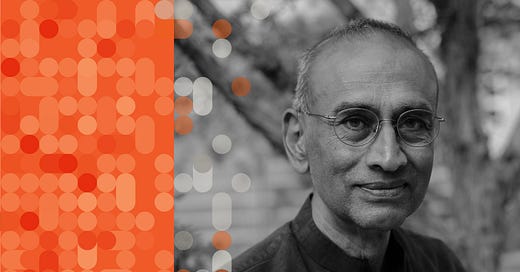
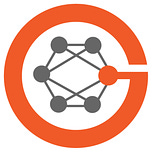
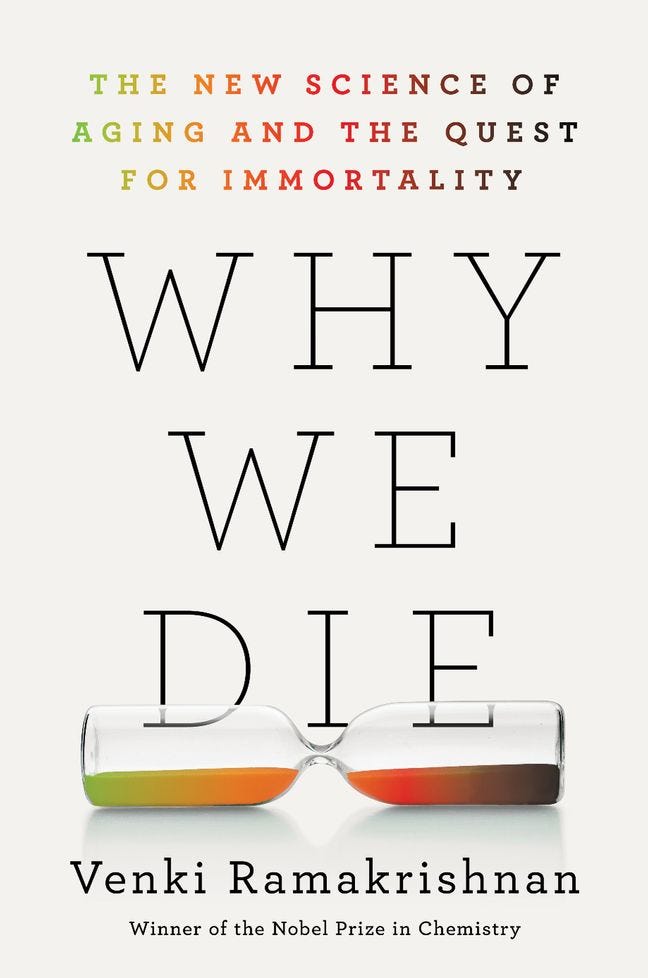
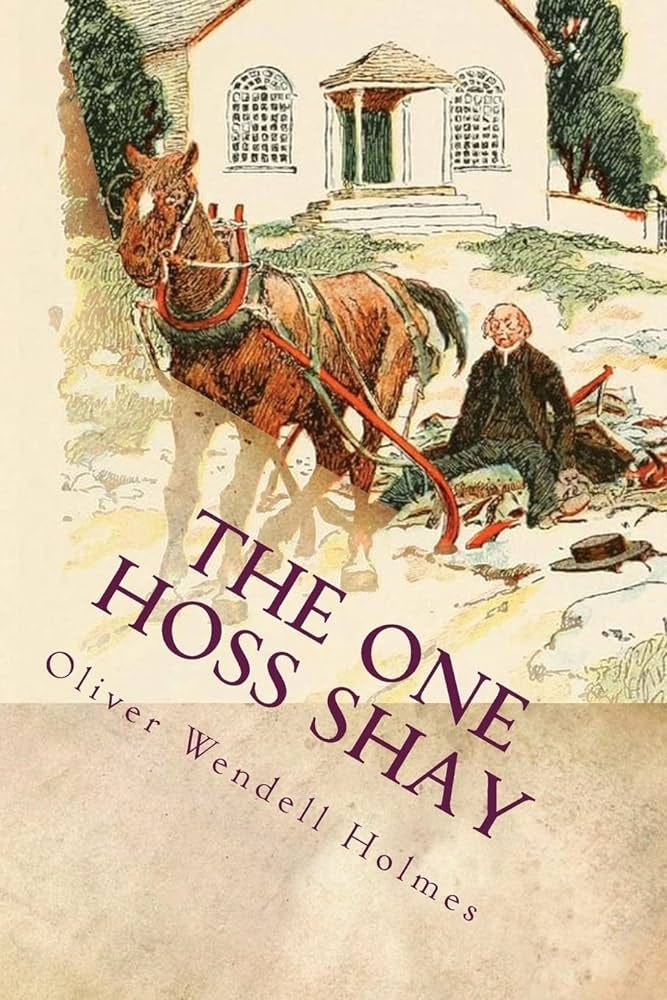
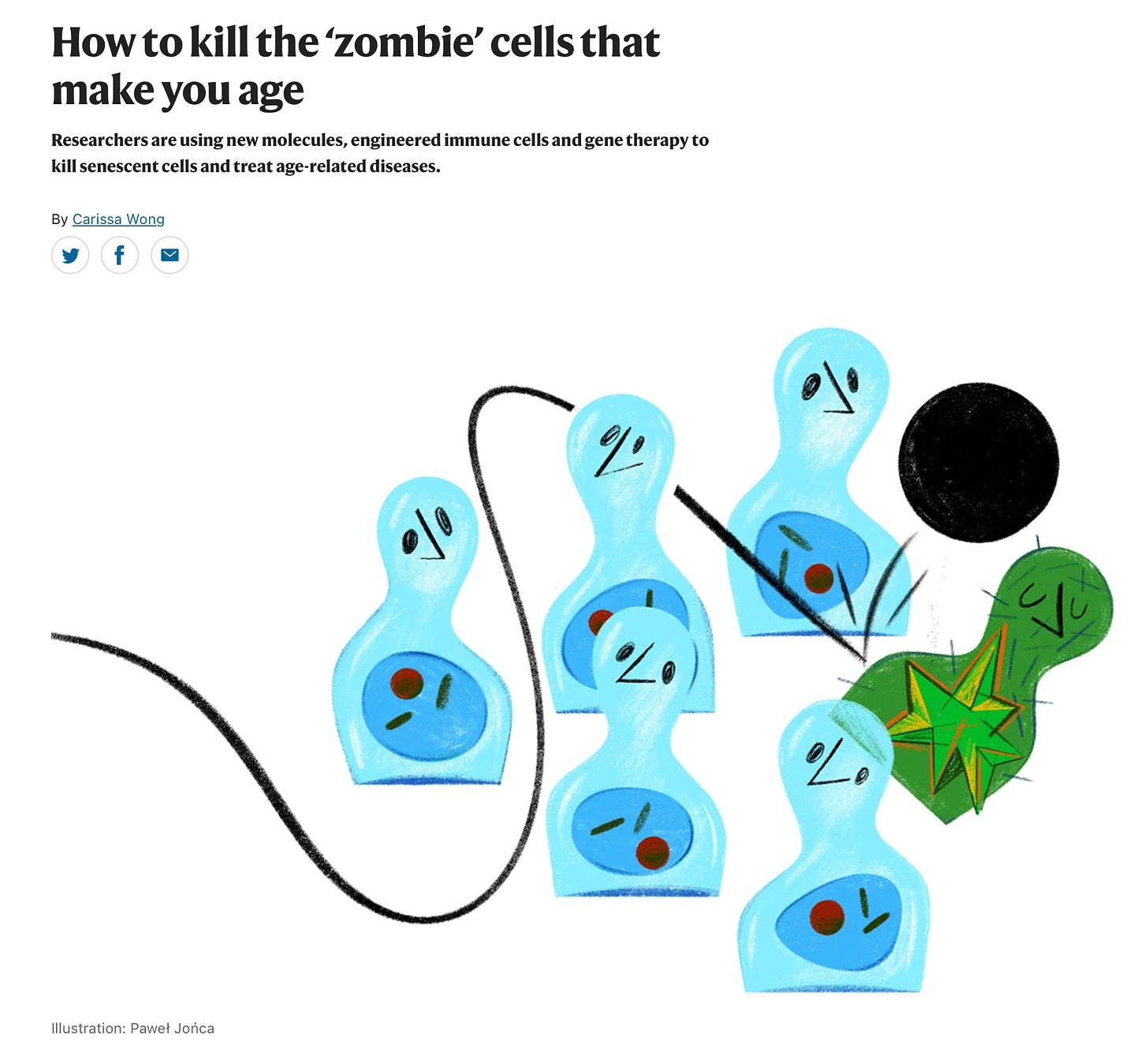


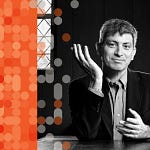
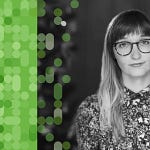





Share this post